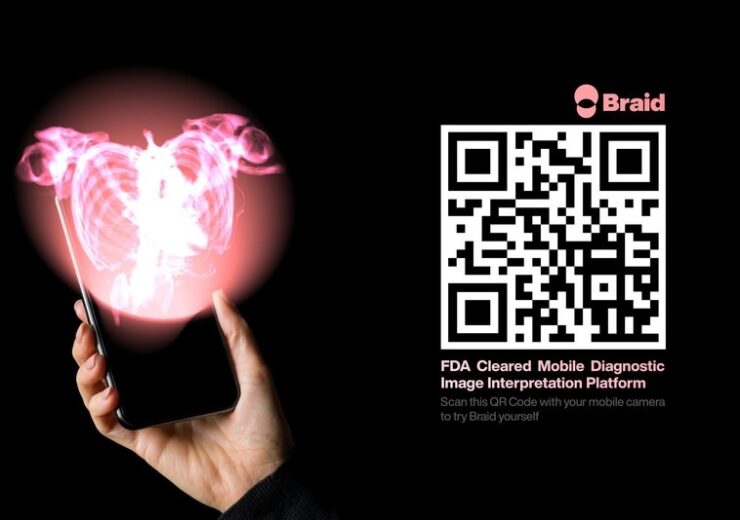Braid mobile application enables providers and radiologists to access, review, and annotate images and share results with patients in real-time

Braid App on an iPhone. (Credit: Braid Health)
Braid Health has secured FDA approval for its AI-powered diagnostic collaboration software, designed to improve diagnostic access and reduce costs for large healthcare systems.
The US-based digital health firm said that traditionally imaging process is associated with delays and lack of communication between providers and patients.
Its Braid mobile application will enable care providers and radiologists to access, review, and annotate images and share results with patients in real-time, from any mobile device, said the company.
Also, its new software with integrated AI is designed to provide quality assurance, helps providers by eliminating errors and ensures enhanced accuracy in interpretations.
Braid Health chief medical officer Rajni Natesan said: “The Braid platform puts cutting-edge consumer technology directly into the pocket of providers and patients, fundamentally raising the bar on quality when it comes to patient care.
“Leveraging the Braid platform, providers have the ability to facilitate care in a timely and collaborative manner, while allowing patients to continue their care journey seamlessly across health systems and providers.”
Braid Health’s AI platform designed for use on existing PACS or imaging system
The US regulatory approval allows the use of Braid Health’s consumer-focused platform by the healthcare systems, which met FDA’s requirements for mobile diagnostic use.
Braid’s new solution has been developed for use with any existing PACS or imaging storage system, eliminating the need to buy expensive equipment to add mobile diagnostics.
Braid Health CEO and founder Kevin Quennesso said that the new platform is capable of delivering DICOM images without any losses, with up to 10x faster times compared to legacy solutions.
Furthermore, the company said that its AI tool enables a provider to easily have a glance at full diagnostic quality images on any device, anywhere, in less time.
Quennesso said: “The pace of innovation in consumer-grade mobile devices is astonishing.
“Today’s phones have four times as many transistors as a radiology workstation purchased only a couple of years ago, effective display resolutions exceed those of 6MP medical displays, even at typical viewing distances, and contrast ratios are 1,000 times greater.
“Our work on edge-based computing along with GPU based DICOM GSDF calibration has allowed us to unlock the potential of these devices, all without needing to install an app.”
